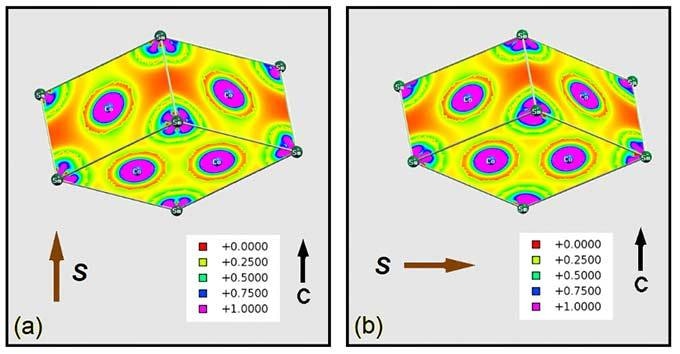Aug 14 2019
Researchers have found a promising tool to improve magnetization and magnetic anisotropy, paving the way for improving the performance of samarium-cobalt magnets.
 (Image credit: AMES Laboratory)
(Image credit: AMES Laboratory)
Researchers at the U.S. Department of Energy’s Critical Materials Institute at Ames Laboratory, together with the Nebraska Center for Materials and Nanoscience and the Department of Physics and Astronomy at the University of Nebraska, recognized orbital-moment quenching as the potential tool, and streamlined the quenching based on the electrical charge distribution in samarium atoms.
The first rare-earth permanent magnets were Sm-Co magnets, and they continue to be the leading performer in applications where resistance to demagnetization—its coercivity—and performance at high temperatures are essential.
Initially, the researchers attempted to test the restrictions of substituting iron for some of the cobalt, trying to make an Sm-Co magnet equivalent in strength to neodymium iron boron (Nd-Fe-B) magnets, which possess a higher magnetic moment.
The Critical Materials Institute (CMI) has as one of its moonshots the discovery of materials that are comparable in strength to neodymium magnets, but with the high-temperature durability of samarium magnets. We were looking to increase the magnetic moment of the standard Sm-Co magnet.
Durga Paudyal, Ames Laboratory Scientist and Project Leader for Predicting Magnetic Anisotropy, CMI
The study partnership resulted in the discovery that replacements of iron could range as high as 20%, maintaining the coercivity of the magnet intact. Computational theory and modeling outcome demonstrated that the electronic structure of the Samarium in the material might break Hund’s rule, which predicts how electrons take up available orbitals in the atomic structure.
The study outcomes will help researchers find out the parameters of magnetism in rare-earth materials, and help expedite the discovery of potentially useful magnets in the future.
The study has been described further in “Anisotropy and Orbital Moment in Sm-Co Permanent Magnets,” published in Physical Review B and authored by Bhaskar Das, Renu Choudhary, Ralph Skomski, Balamurugan Balasubramanian, Arjun K. Pathak, Durga Paudyal, and David J. Sellmyer.